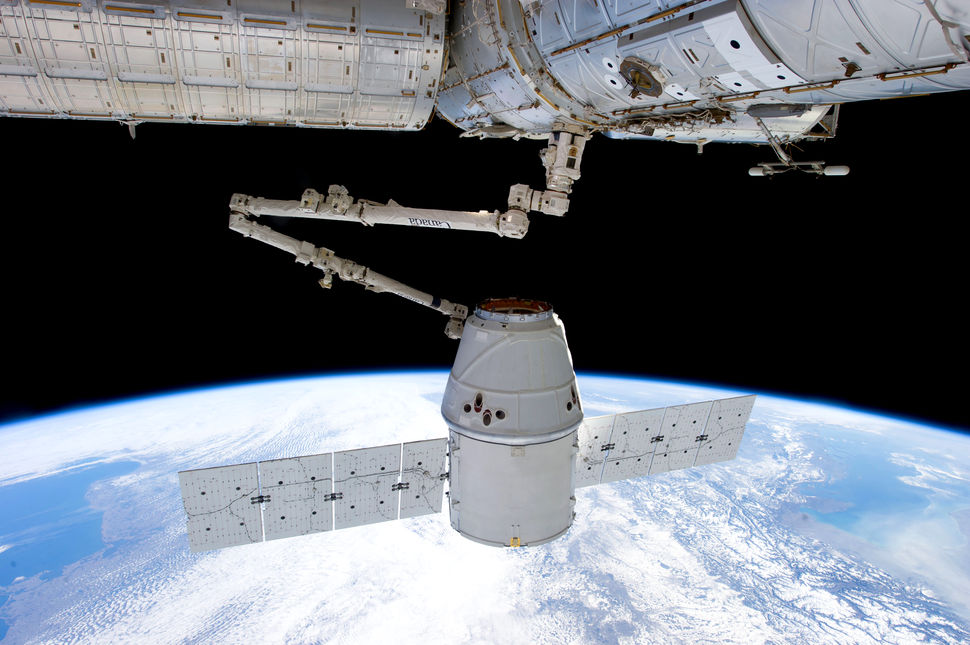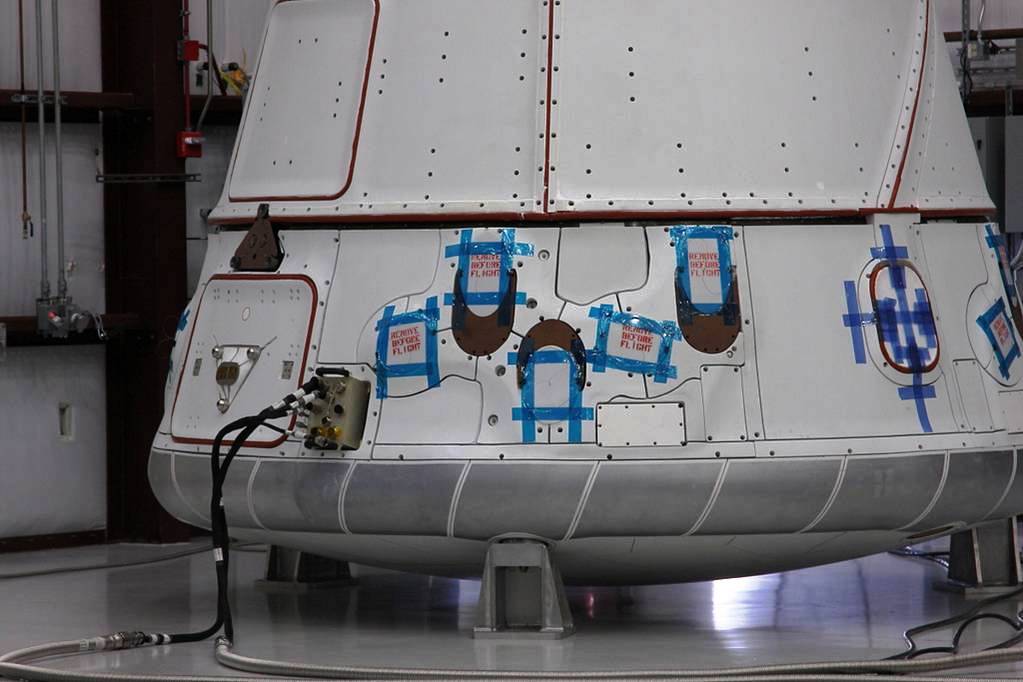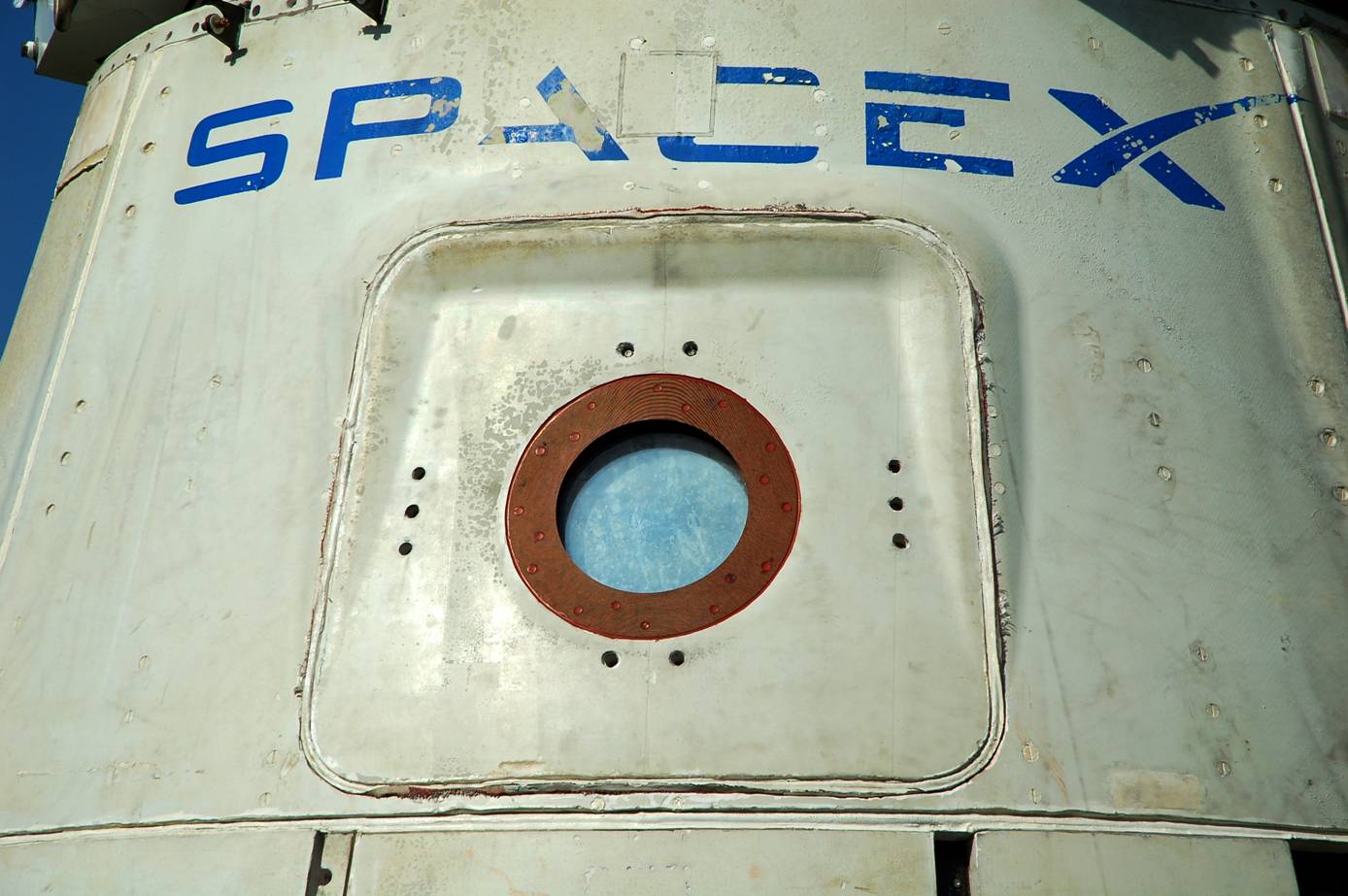
Hawthorne, Calif.-based Space Exploration Technologies (SpaceX) has just passed the seventh of 15 development milestones set by NASA’s Commercial Crew Integrated Capability (CCiCap) initiative. Along with Boeing and Sierra Nevada Corporation, SpaceX is being funded by NASA to develop a commercial transport vehicle for astronauts to and from the International Space Station (ISS).
SpaceX’s Dragon spacecraft has already made three successful unmanned flights into low-Earth orbit, docking with and delivering cargo to the ISS on the last two of these. In August 2012, NASA announced that, under CCiCap, it had awarded SpaceX $440 million to continue development of a crewed variant of Dragon. Three months later, following the spacecraft’s first operational supply mission to the ISS, NASA declared that the California company had completed the first of its CCiCap milestones. In December, SpaceX accomplished preliminary design reviews covering the first two phases of a manned flight, focusing on the ground systems and the ascent.
The latest milestone involved a review at SpaceX’s headquarters in Hawthorne to NASA officials and other aerospace experts of systems essential to life-support of the Dragon crew and its safe return to Earth. Engineers from all parties carefully scrutinized aspects of the vehicle that will be crucial in this regard, with NASA keen to make sure that its vast experience is used to the best advantage.
Commented Ed Mango, NASA’s CCP (Commercial Crew Program) manager: “NASA has learned a lot about keeping our astronaut crews safe throughout a mission, and we don’t want those lessons to be forgotten. So, we’re sharing a lot of what we already know, and the company is adding its own innovations to suit its needs and meet its challenges.”

The review took in the basic means of sustaining the crew on a Dragon flight, including pressurizing the spacecraft with breathable air, providing sufficient food and water for up to seven astronauts, and fully protecting those aboard from the harsh external environment of space. It also went over in fine detail the onboard hardware and software needed to approach, rendezvous, and dock with the ISS, and how the spacecraft can also be operated from controllers on the ground.
In parallel with pressing ahead with the crewed variant, SpaceX is continuing its supply missions to the ISS, under NASA’s Commercial Resupply Services contract. The third of these, CRS-3, according to Spaceflight Now, is scheduled to launch on Jan. 15, 2014. NASA’s Consolidated Launch Schedule has the CRS-3 mission launching on Dec. 9, 2013.
Data and experience gained from these cargo flights will feed directly into the development of the astronaut-carrying variant of the Dragon spacecraft.
“SpaceX’s Dragon spacecraft was designed from the outset to accommodate the upgrades necessary to safely carry people, so we’re excited to have reached the halfway point in our agreement with NASA to design those features,” explained Gwynne Shotwell, SpaceX president and chief operating officer. “As we leverage our experience successfully delivering cargo both to the International Space Station and back to Earth, SpaceX remains committed to providing the safest manned flights ever conducted.”
Having overcome the orbit and entry review hurdle, SpaceX now moves on to its next milestones in the 21-month-long series: an in-flight abort test review in September and an overall safety review of the crewed Dragon variant the following month. The company remains on course to conclude all of its CCiCap milestones by the summer of 2014.

Want to keep up-to-date with all things space? Be sure to “Like” AmericaSpace on Facebook and follow us on Twitter:@AmericaSpace




I’m glad to see SpaceX picking up the pieces of NASAs failure.